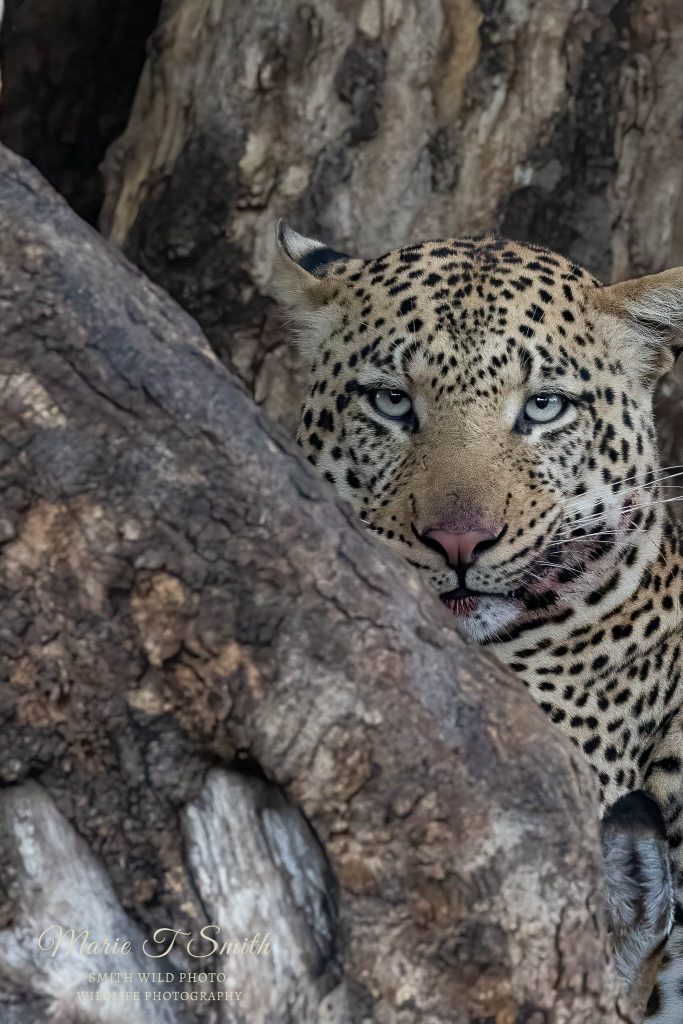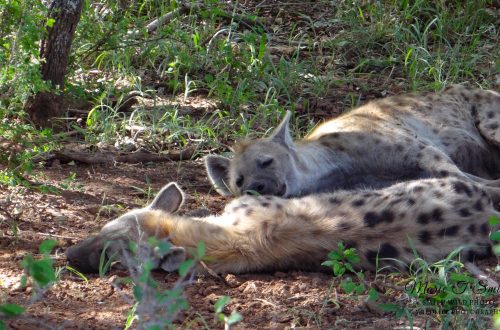November 2022 and it was time to take our trip to Mashatu in Botswana – finally. Delayed initially due to the pandemic, things were open again, so we boosted our Covid-19 vaccinations, packed our cameras and took off. Mashatu Game Reserve is located in the Tuli Block of eastern Botswana, and it is home to a diverse range of wildlife. There are a number of ways to reach it, depending on your route and budget. We flew into Johannesburg, and onwards to Polokwane. There we met our professional photographer tour leaders, Ann & Steve Toon, for our road trip up to the border with Botswana.
Cue the jeopardy.
The original plan had been to cross at Pondrif, the closest post to Mashatu Game Reserve. Heavy rains had hit South Africa before we landed, which meant the usual causeway crossing was out. And to add to the adventure, a mechanical failure meant the wee cable car wasn’t running either. And so we took a scenic detour to the Platjan border post. A bit bumpy once we got off the better roads, but it’s all part of the adventure, right?
Look, it could have been much worse – we might have been on the cable car when it stopped (winking emoji). But this is not about our journey to get there – let’s face it we are no strangers to a bit of travel drama. I refer you to our Tanzania trip.
It’s all about how we fell in love with Mashatu.
Now sit back, relax, and enjoy the ride.
Seeing spots
I have spared you the full road trip. Because I’m guessing you’re really here to read about the wonderful wildlife and photo opportunities Mashatu had to offer?
We were finally welcomed at the lodge, tired and hot, having switched to the safari vehicles at the border. Refreshments and a briefing – then it was time for a quick change before we headed out in full safari mode. ‘We’ being a group of six plus Ann and Steve T plus a tracker, across two vehicles. One typical open-topped safari vehicle, the other a specially adapted photo vehicle. Both gave ample space and, with no back or canopy to impede vision, all-around viewing angles. Everyone got a shot in each, in various positions (seats I mean – not, like doing yoga or handstands), over the 10 days. Thanks to Steve T and his demon rotation plan (another winking emoji).
I bet we were not long out of Masahtu Lodge when we came across not one but two leopards. Having a post-coital snooze. Wozwers! I can probably count on one hand the number of times we have seen a leopard (does just seeing one eye, in the undergrowth, count?). So two was just greedy. We sat it out, far enough and quiet enough, so as not to disturb them. And sure enough, they rewarded us with a little more action.
The good thing about Mashatu is they operate a strict ‘three vehicles at any sighting’ policy. Even then, not everyone will always capture the action, but it does mean two vehicles can get entirely different angles. And most of all, it’s just a whole lot better for the wildlife too.
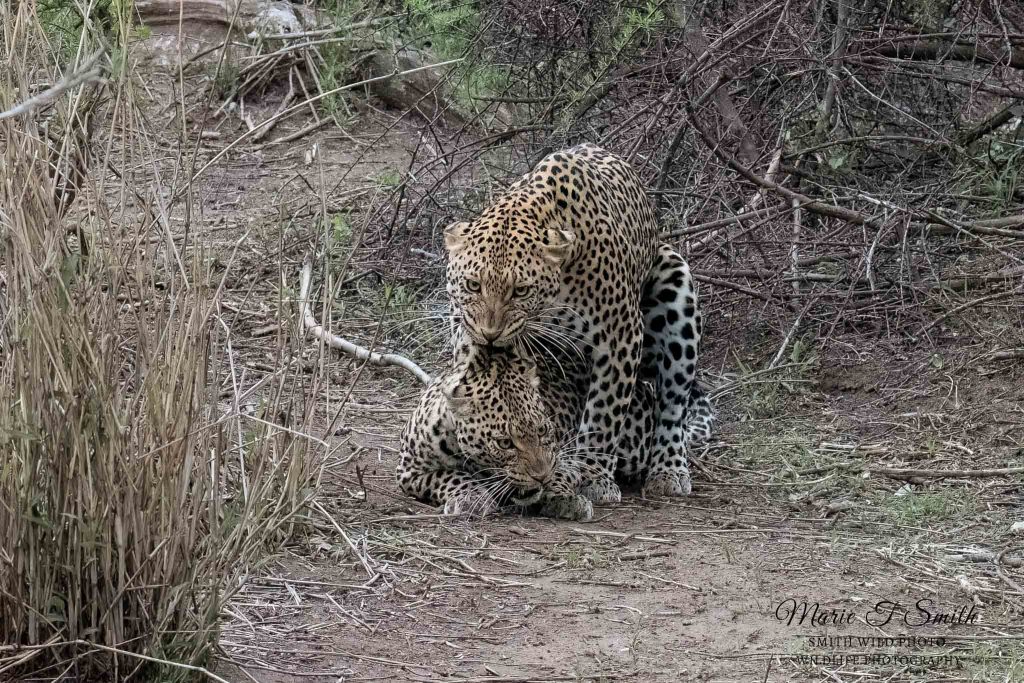
Satiated (us, not them) we left them alone, wondering would we ever see them again? The simple answer is yes, although not together. But we continued to have leopard sightings almost every game drive. And not just glimpses, either.
Now for some more highlights
Elephant antics
Mashatu is also home to great herds of elephants. Heavy rains, though, meant that they were not always reliably congregating around rivers. In fact, many of the animals were able to wander farther from the usual watering holes. Our attempt at a session in Mashatu’s hide, for example, brought little more than teasing terapins, dragonflies and the odd bird – simply because there were enough puddles to sip from without having to leave an otherwise good feeding spot. That did give rise to some great opportunities as herds, with babies, moved around the reserve. And when they did come to the river, they didn’t disappoint. The steep sides make for some great ‘sledging’ shots.
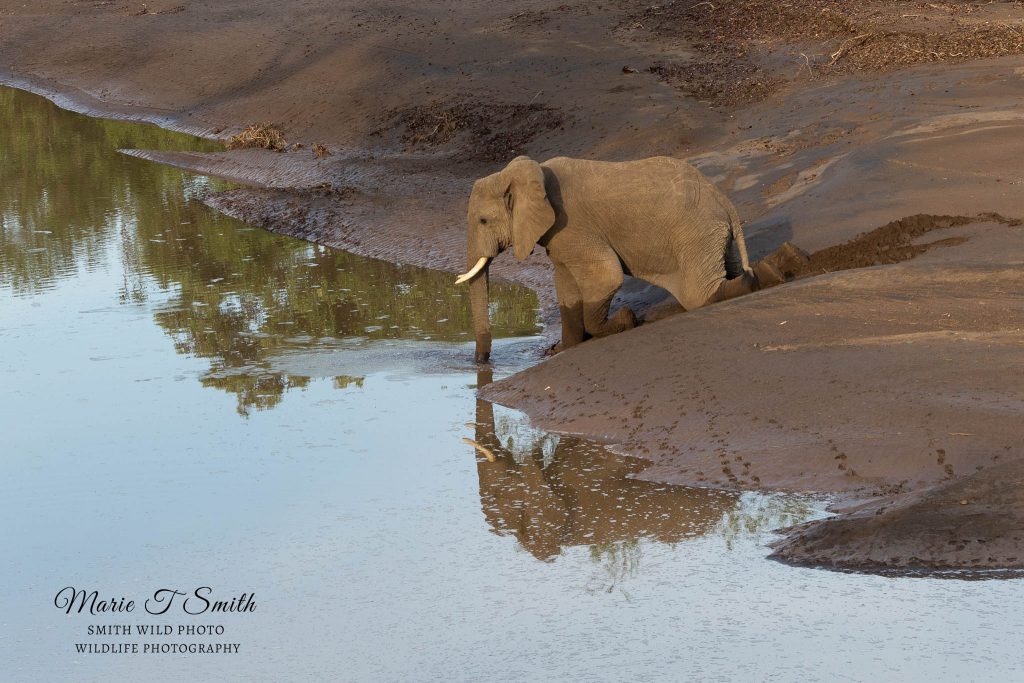
Weather or not
I have already mentioned the rain. November is the summer season. Hot by day, warm by night. And a good chance of thunderstorms ahead of the main rains. And we did have some pretty spectacular thunderstorms some evenings. Only one game drive was completely abandoned – giving time for the guides to assess conditions. With river crossings an integral part of being able to access parts of the reserve, quicker, it made no sense to press on. Besides, it was a good opportunity to take a couple of hours out to review our images so far and make mental notes of things to try for the rest of the trip.
And as the rains stop it can make for some interesting light, and skies.
The flip side though, is when it was dry and sunny, it was a great chance to try some high-key alternatives. Embracing the harsh light to create more ‘arty’ images is one of my personal favourite styles.
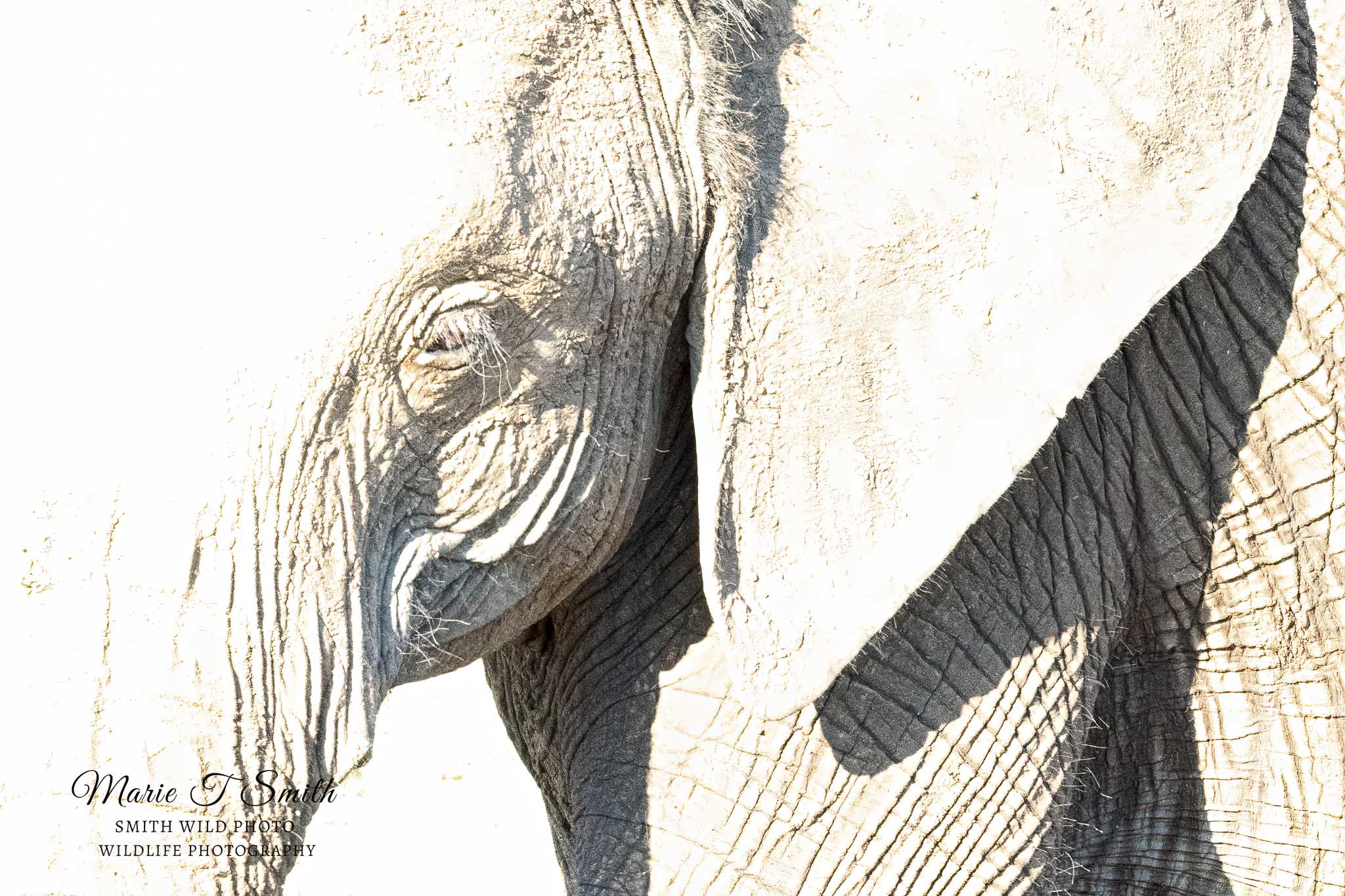
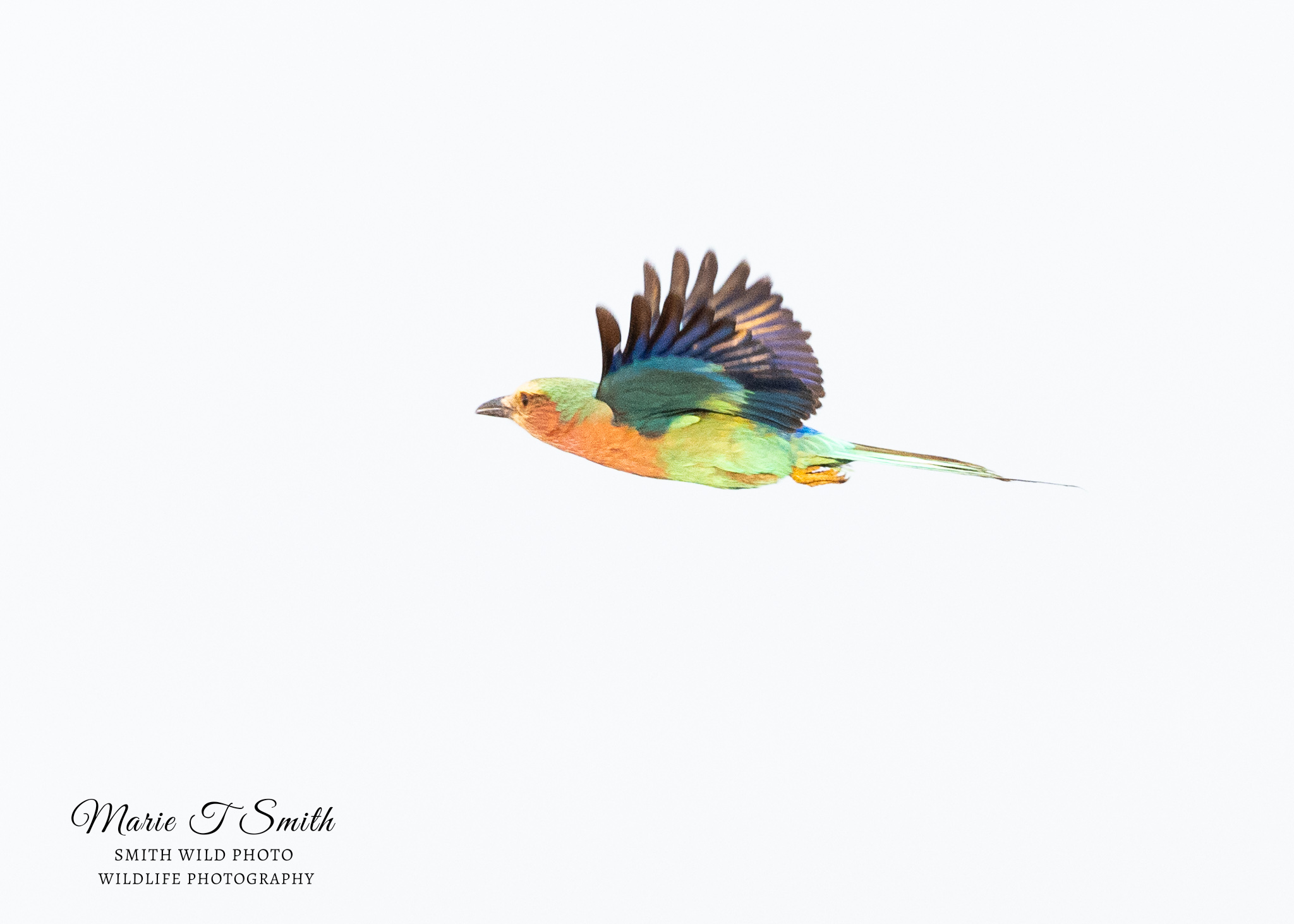
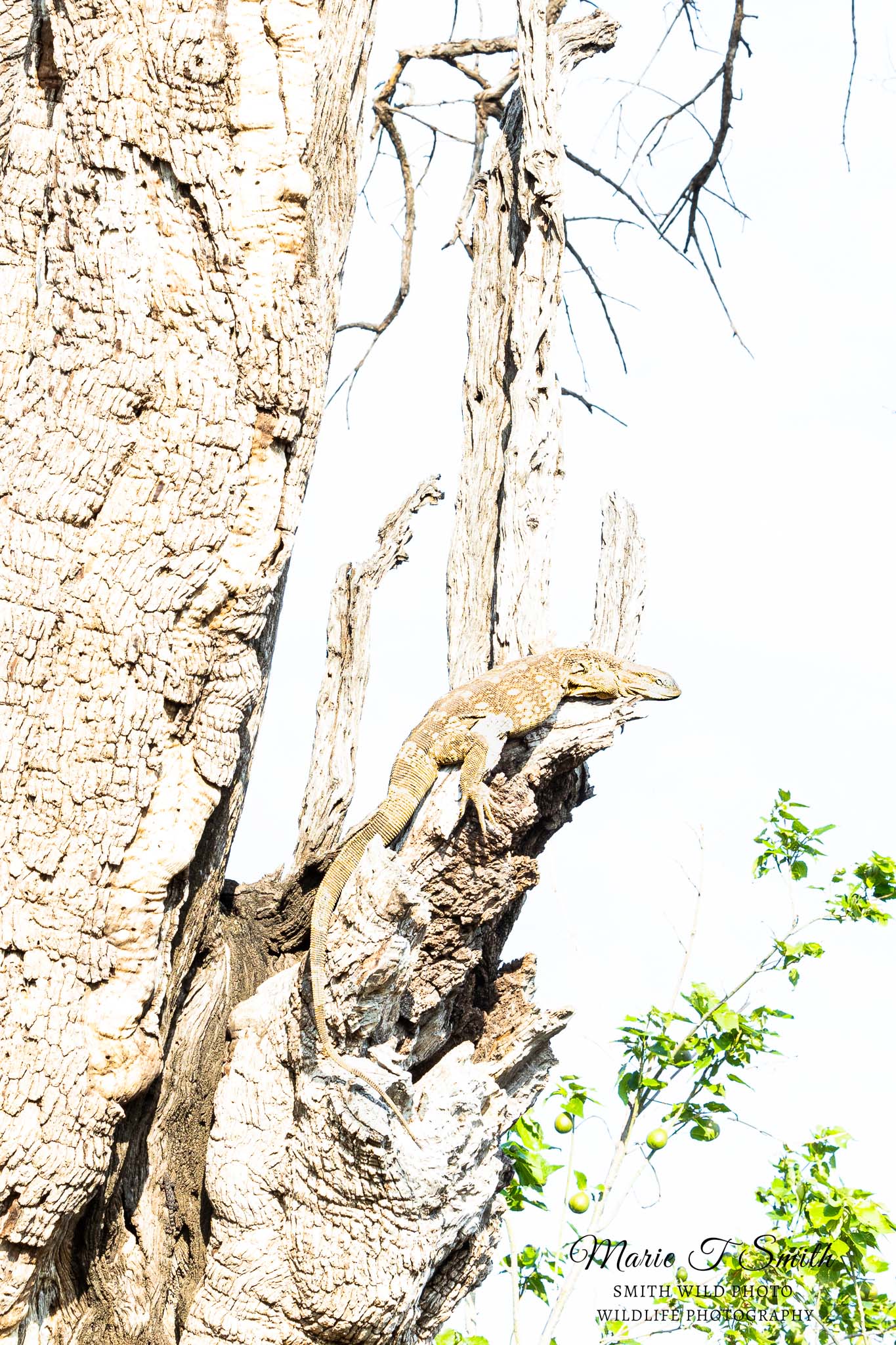
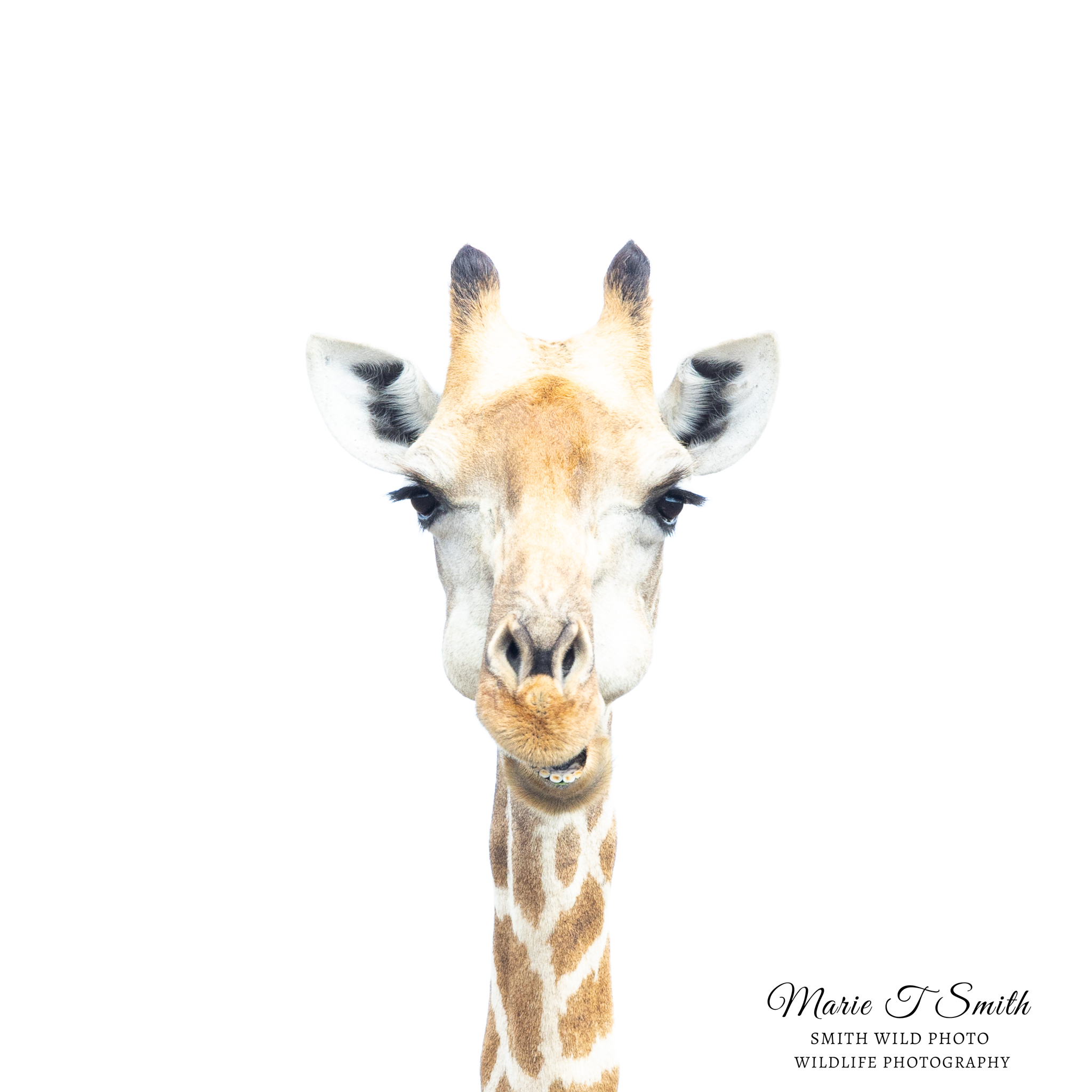
And the low light wasn’t without offering its moments too…
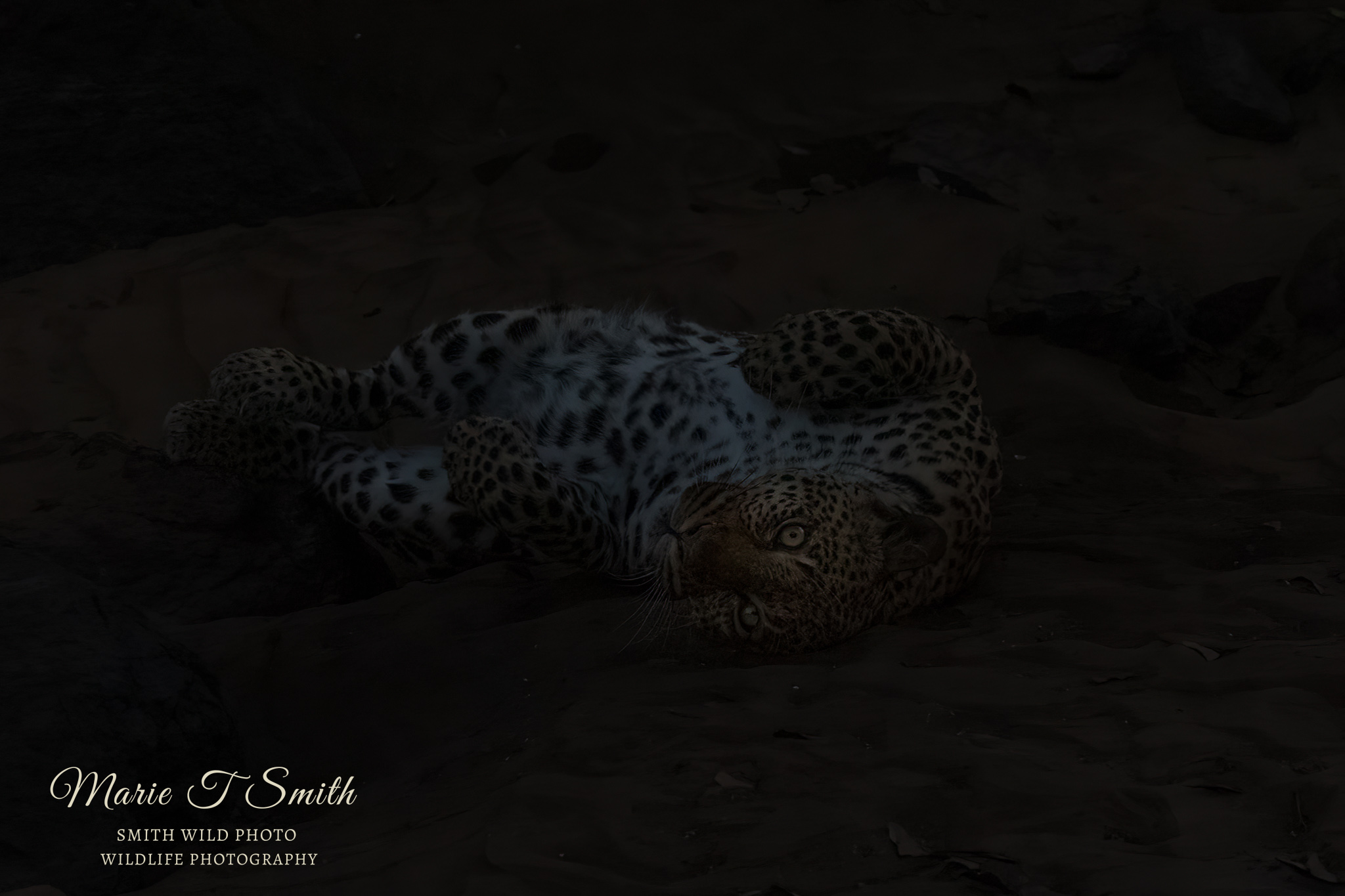
The other thing about the rain and the sun is the growing seasons are changing too. The bushes were greener than they should be. We literally saw the grass grow, in our ten days. And the flowers, that carpet the ground usually much later, were beginning to open. Not enough, and not soon enough, for our visit. But the weather was definitely creating a shift.
Ooh, baby, baby
Mashatu is home to the Majale Island pride of lions. We came across them, almost daily. Sometimes together, sometimes in smaller groups. The majestic males, and the powerful females, accompanied by offspring of various ages.
And whoever said the early bird catches the worm, wasn’t wrong. We gambled on an early start to get across the river to where we had seen some of the pride guarding a feast! We guessed (correctly) that more of the pride would move in to feed. What we didn’t expect was to be treated to the moment the Majale Pride ‘mum’ decided it was time to introduce her tiny cubs to the family.
Okay, I can’t lie, that bit made me cry. Those tiny little ‘growls’ will live with me forever. ‘Rourrrr’.
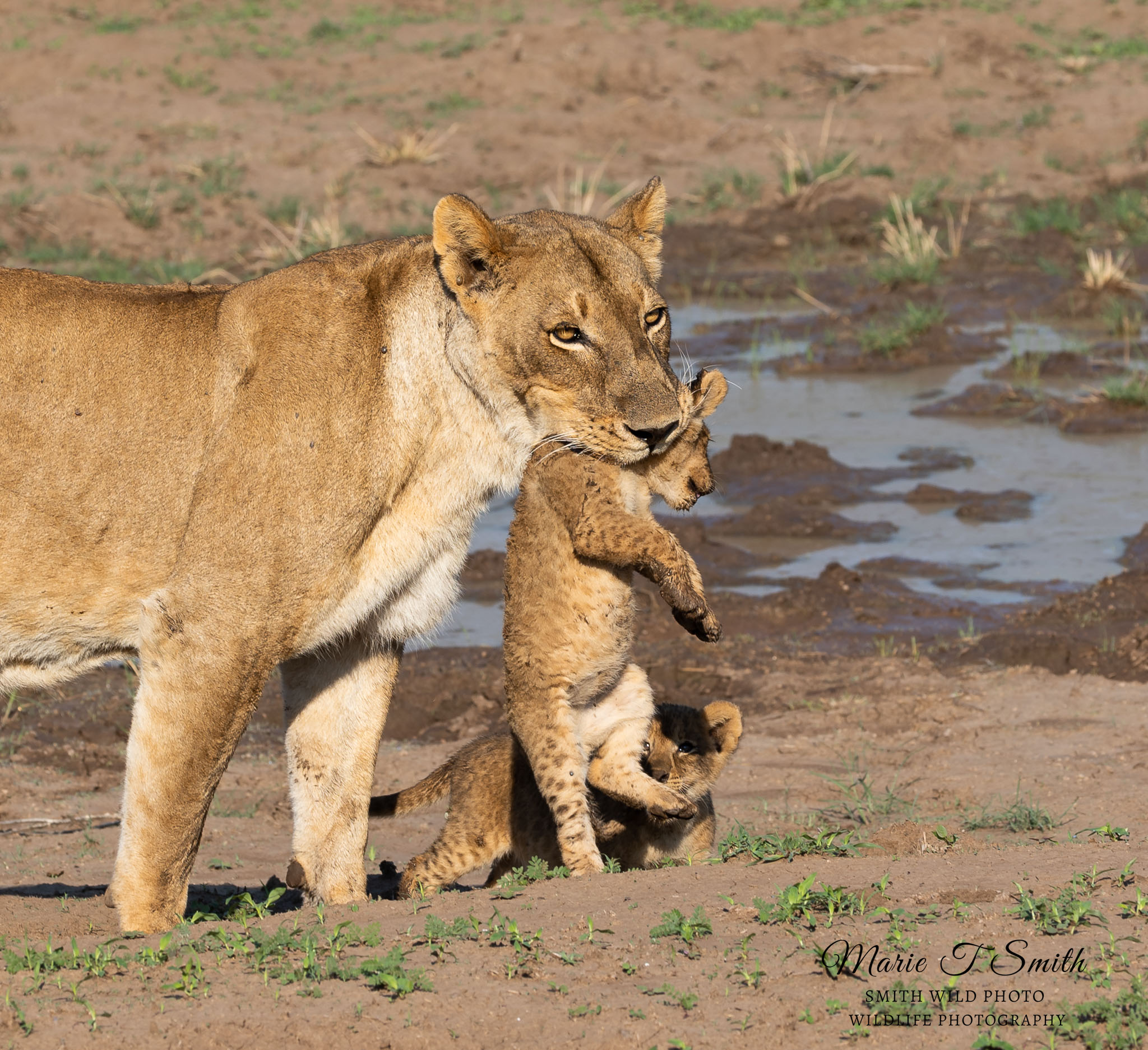
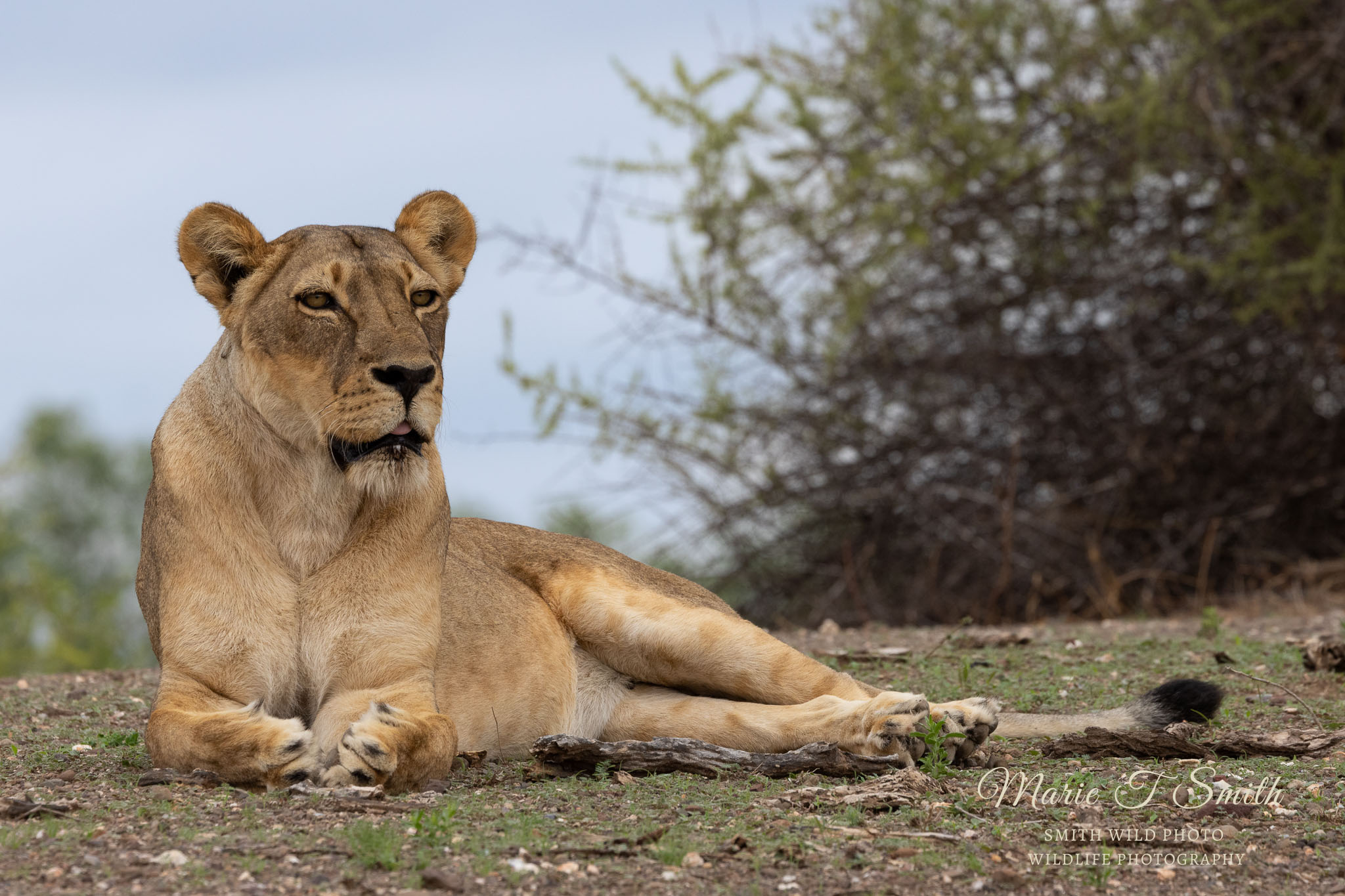
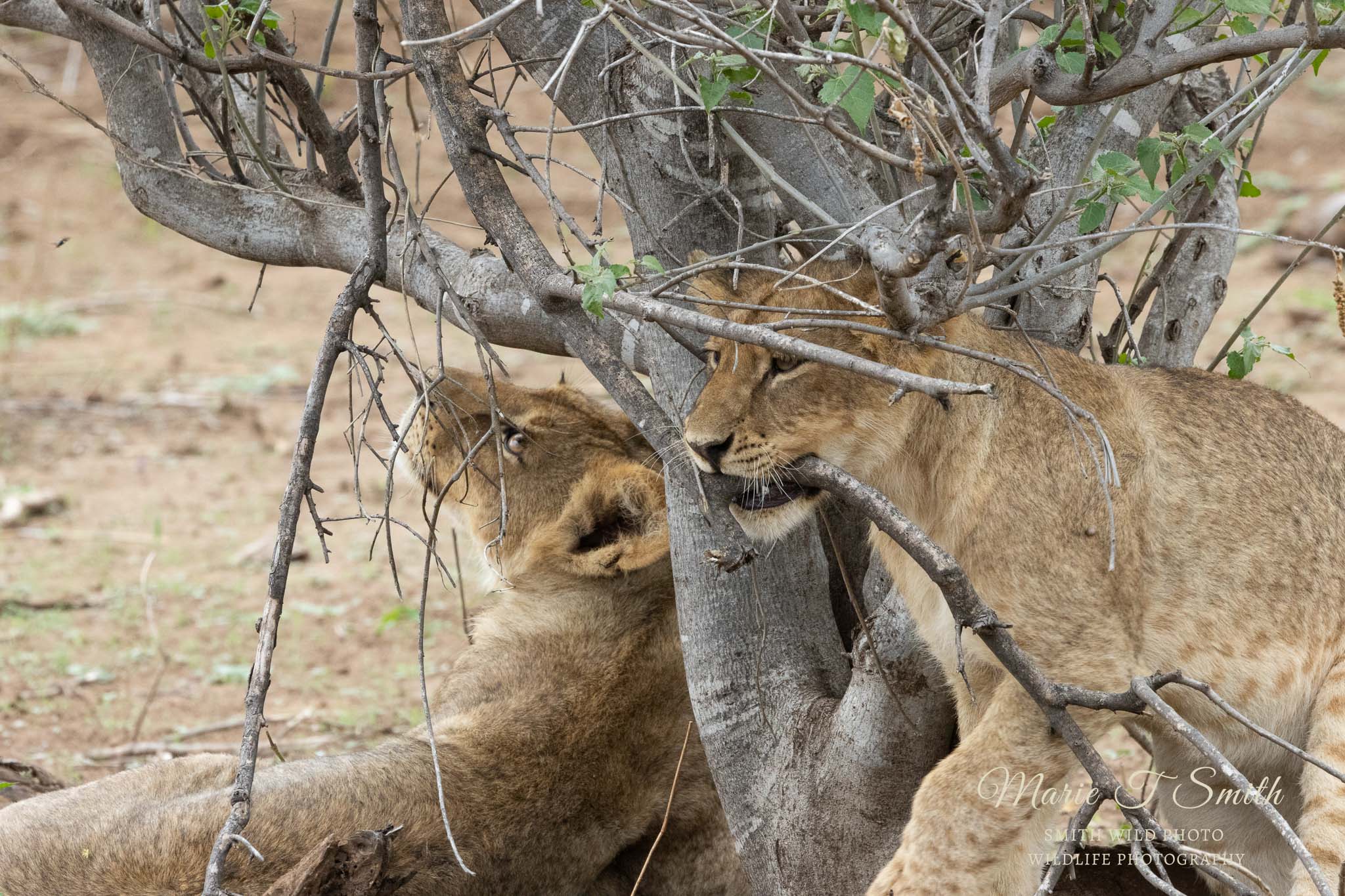
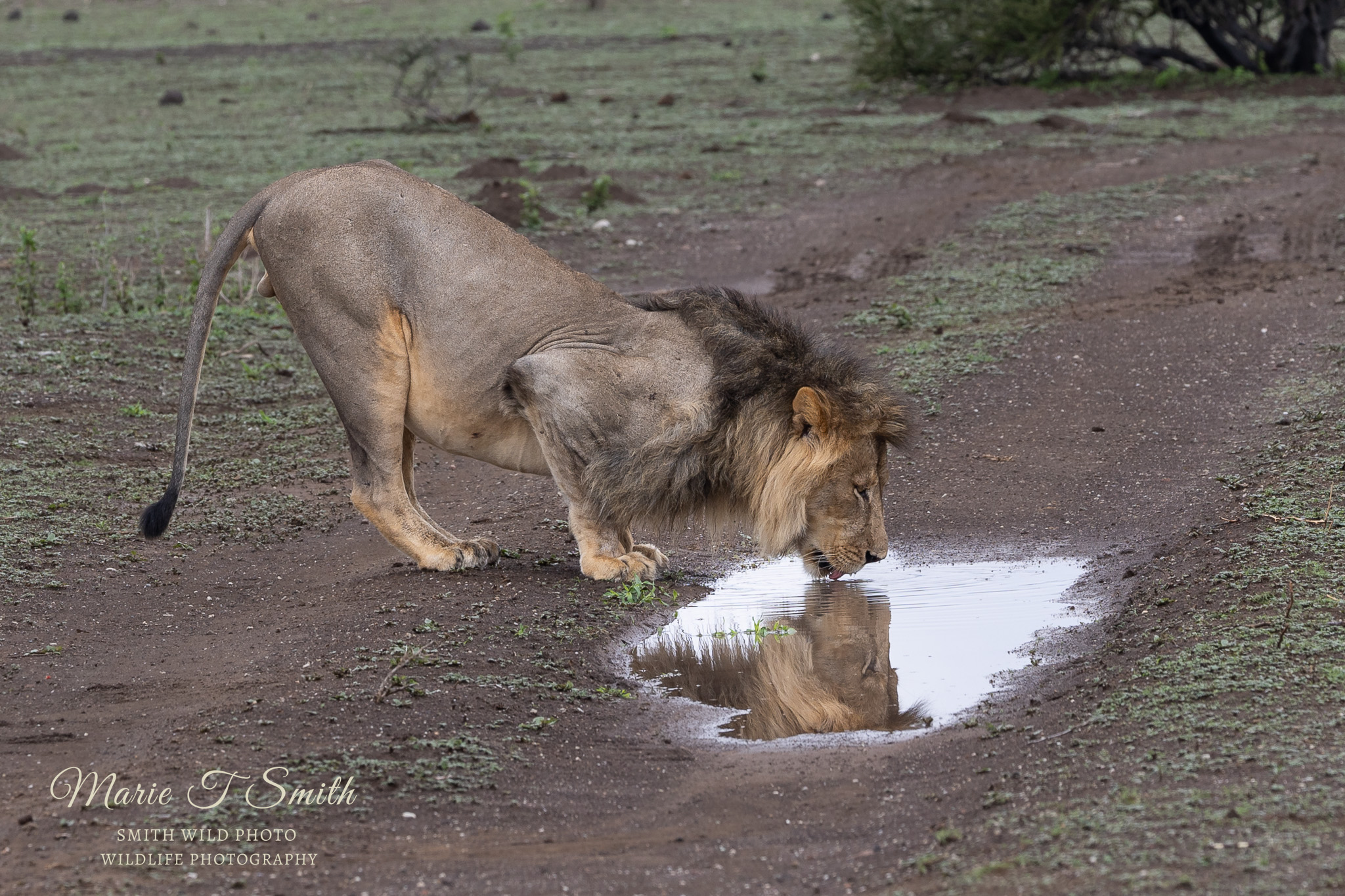
The supporting acts
Okay, it’s wrong to call them that as it felt like in among the “wow” moments there were lots of incredible opportunities and sightings that deserve not to be overshadowed. Whether it was the black-backed jackal cubs playing in the golden evening light. Or the hyena lay beside one half of its dinner, looking like some strange two-headed beast. Or the usually shy wildcat that decided we could stay as long as it didn’t have to exchange its shade for the blistering heat. The stormy evening skies provided the perfect canvas for the vultures. And the tiniest baby elephants, peering between Mum’s legs, reminded us to always look for the little things.
We love you, Mashatu, we do
It’s hard to pinpoint the precise moment we realised Mashatu was under our skin. We could easily say it was the wealth of leopard sightings. “Oh no, not another leopard!” said no photographer, or lover of wildlife, ever. Or the precious time we spent watching the tiny lion cubs find their feet among the rest of the pride – have I mentioned that?
It could have been waking in the incredibly comfy beds, inside cosy air-conditioned suites, while the baboons played hopscotch on the roof. Or dining to the sound of the toads mating, as they competed with the crashing thunderstorms and torrential rain.
Maybe it was the warm welcome we have come to associate with our arrival in Africa. The “Good luck!” we carried with us, each time we left for a game drive. The soothing cool towels awaiting our return. Even the many weaver birds seemed primed to entertain us when others might choose to have a siesta. Literally, one hundred or more couples, the ‘women’ chattering as the males worked to create the perfect nest. It was nuts. And fascinating. All at the same time.
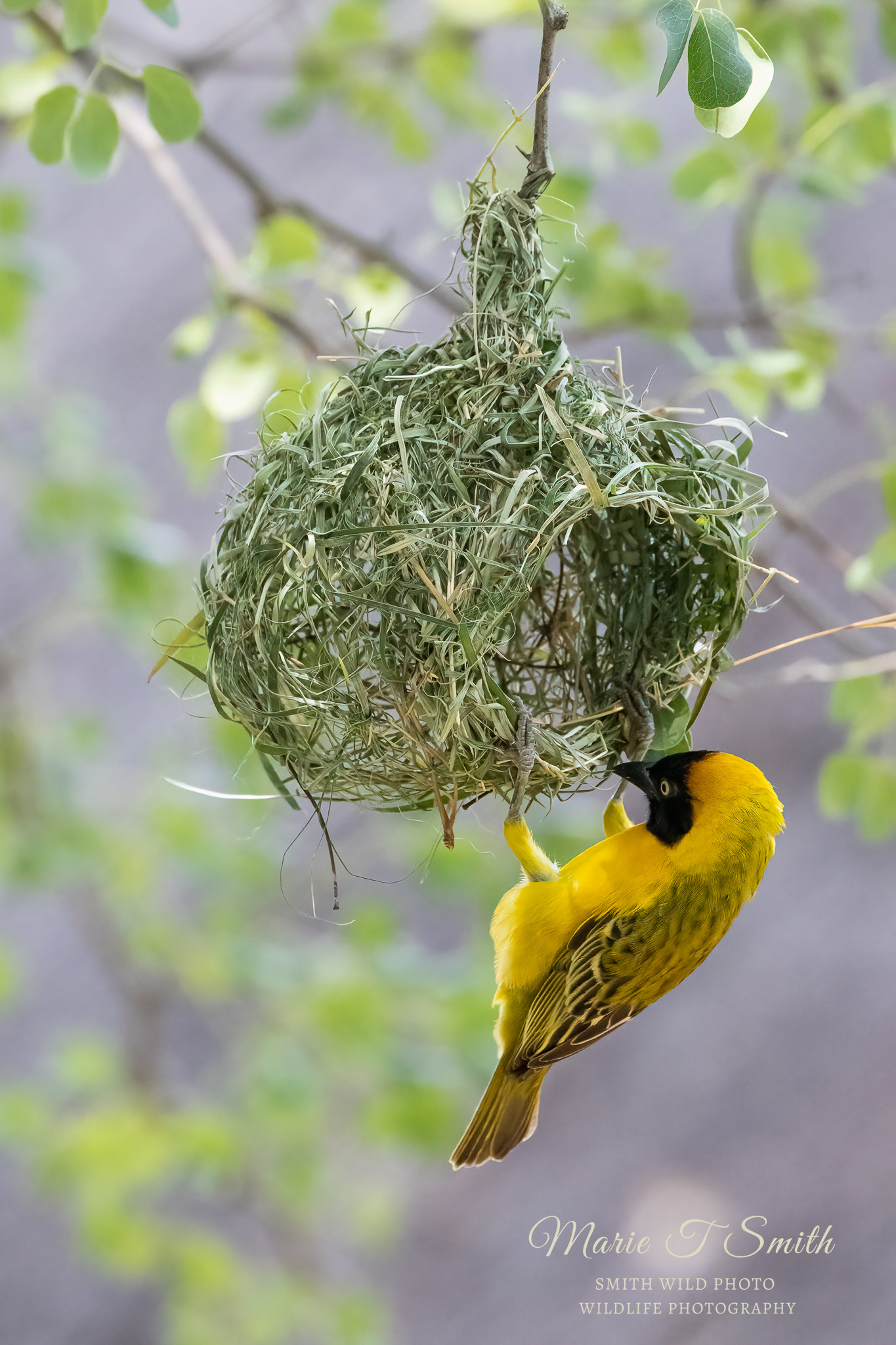
There is the attention to detail, afforded to photographers. Mashatu, together with Photo Mashatu, get that this is really about getting that all-important shot. The guides know their stuff. In fact, they carry cameras too. And we love that! They see what we need to see, and that matters. What’s that saying? Teamwork makes the dream work.
And they are local. These guides operate here every single working day. They are the eyes and ears of the reserve. We truly feel that their local knowledge was invaluable. It’s not just about the lie of the land. Or the movement of the wildlife within it. They know the animals, they recognise them. Know their history. So it becomes a much more personal experience.
On our final morning, we stopped for our last al fresco coffee break. Needing to have this final moment of reflection, I took myself away from the chatter. I looked out across the vast plains. Took a deep breath, inhaling the smell, locking the sounds inside me. How was this our final morning already?
“Are you taking it all in?” A quiet question, not intruding. But it was enough to finish me off. I tried hard to swallow the lump in my throat. She does it every time – mother Africa – she makes me so emotional I can’t speak. And that’s okay because then she puts her arms around me. She knows I’ll be back. Soon.
Epilogue
You know it wouldn’t be a Smith Wild Photo story without one final bit of jeopardy, don’t you?
We left the lodge with a final goodbye. This time it was just a short drive to the Pontdrif border crossing. But the Limpopo River was giving us one last adventure. The causeway was still flooded. Which meant only one thing. We were going on the cable car! The car only holds a maximum of 4 people – and your bags go across separately. Though the crossing is only a matter of minutes – it’s pretty spectacular as you look down into the raging Limpopo river below.
I did video the crossing but in my crazy excitement mixed with emotional weeping, I think I might have deleted it. But here’s a link to a video taken by Tuli Lodge on YouTube, albeit when the river was much lower and calmer.
The rest of the transfer passed went smoothly, thankfully. Thanks to all our fellow guests who made the trip memorable in every way. And to the tour lead photographers Ann and Steve Toon.
Are you tempted to take your camera to Mashatu? You can go it alone or we travelled with Ann and Steve Toon, award-winning professional wildlife photographers with 20 years experience in Southern Africa.
